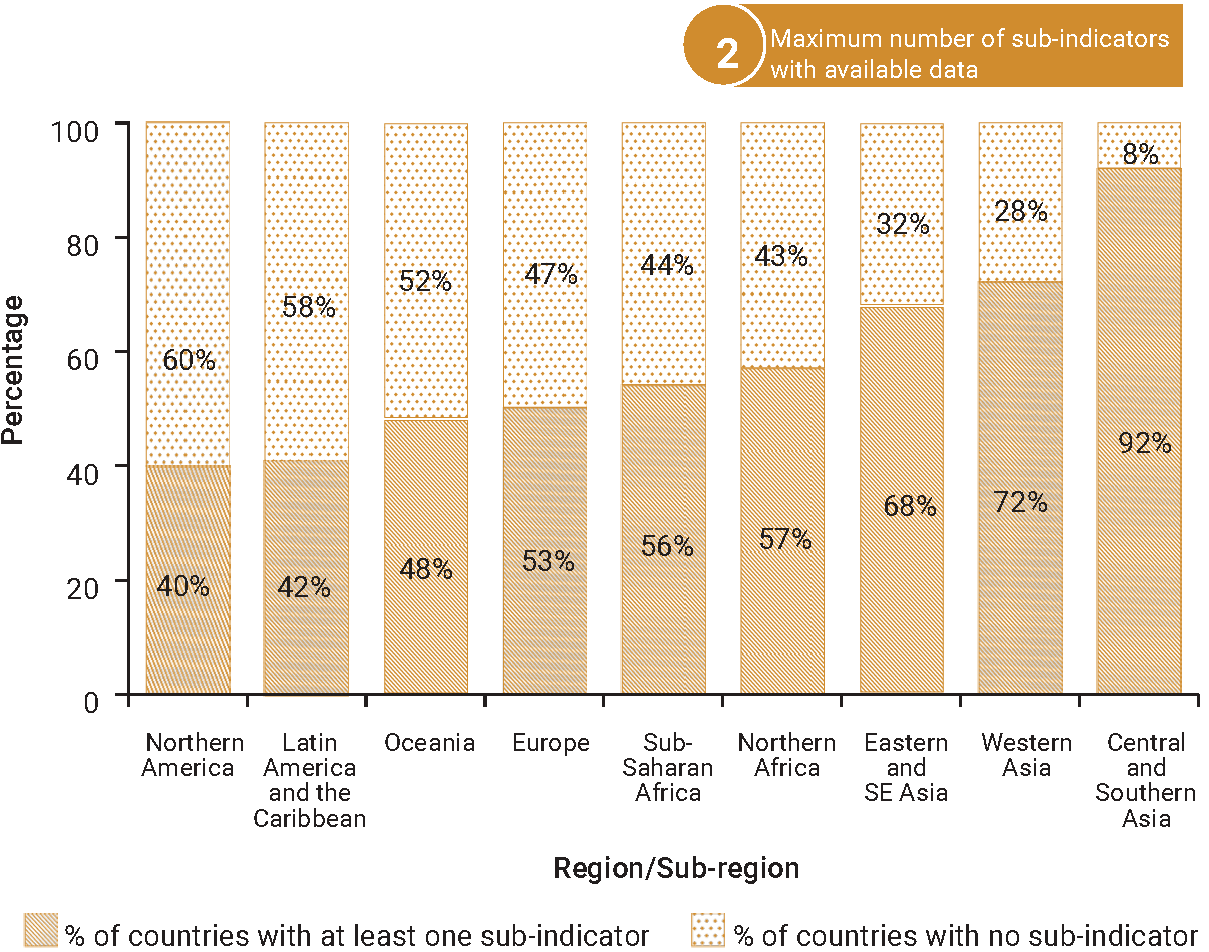SDG Indicator 1.5.3: Number of countries that adopt and implement national disaster risk reduction strategies in line with the Sendai Framework for Disaster Risk Reduction 2015–2030
1. Key features and metadata
Definition: This indicator monitors the number of countries that have adopted appropriate national frameworks to ensure alignment with the objectives of the Sendai Framework for Disaster Risk Reduction 2015–2030 (Sendai Framework).
| Sub-indicator | Disaggregated by |
|---|---|
|
SG_DSR_LGRGSR Score of adoption and implementation of national DRR strategies in line with the Sendai Framework (%) |
No current data disaggregation available.
|
|
SG_DSR_SFDRR Number of countries that reported having a National DRR Strategy which is aligned to the Sendai Framework (Number) |
Sources of information: Data collected from national line ministries, national disaster management agencies, civil protection agencies, and meteorological agencies via the Sendai Framework Monitor (UNDRR).
Related SDG Indicators: 11.b.1 and 13.1.2 (duplicates) and 13.1.3 (Proportion of local governments that adopt and implement local disaster risk reduction strategies).
2. Data availability by region, SDG Global Database, as of 02 July 2025

3. Proposed disaggregation, links to policymaking and its impact
| Proposed disaggregation | Link to policymaking | Impact |
|---|---|---|
|
Compliance with key guiding principles of the Sendai Framework (1=YES, 0=NO)(UNDRR 2017):
|
By scoring each of the 10 key guiding principles, this disaggregation delivers greater details on progress made through national strategies to align with the Sendai Framework requirements. It enables countries to assess their policy needs to strengthen resilience through advancing holistic transformational change at all levels and allowing countries to allocate sufficient means to: (i) integrate DRR across all policies, programmes and investment for sustainable development, (ii) manage disaster and climate risk through a mainstreamed approach, (iii) promote risk-informed investment in the public and private sectors, and (iv) develop communication tools to promote risk reduction and management(UNGA 2016c). There should be a special focus on building resilience and reducing the exposure of the poor and those in vulnerable situations, as they are particularly impacted by disasters. The proposed disaggregation links to the Sendai Framework for Disaster Risk Reduction, Target E: Substantially increase the number of countries with national and local disaster risk reduction strategies by 2020(UN 2015a). |
By conforming to the 10 key guiding principles of the Sendai Framework, countries are expected to significantly reduce the impacts of disasters on people – particularly the poor and those in vulnerable situations – communities and businesses. For example, in terms of loss of life, destruction of livelihoods, housing, physical and economic assets, outbreaks of disease, or environmental degradation at all levels(UNDRR n.d.a; UNDRR n.d.b). Countries also align their DRR strategies and related strategies like the National Adaptation Plans(UNDRR 2021). These objectives can be attained by lowering existing risks and preventing new ones, while strengthening the resilience of the society as a whole through multidimensional risk management strategies tailored to specific national and local conditions. Further efforts are needed to raise awareness among the population and local decision-makers on disaster consequences as well as to strengthen their capacity for anticipating and managing hazards by mainstreaming risk reduction across all sectors and activities(UNDRR 2022b; UNDRR 2023). |

